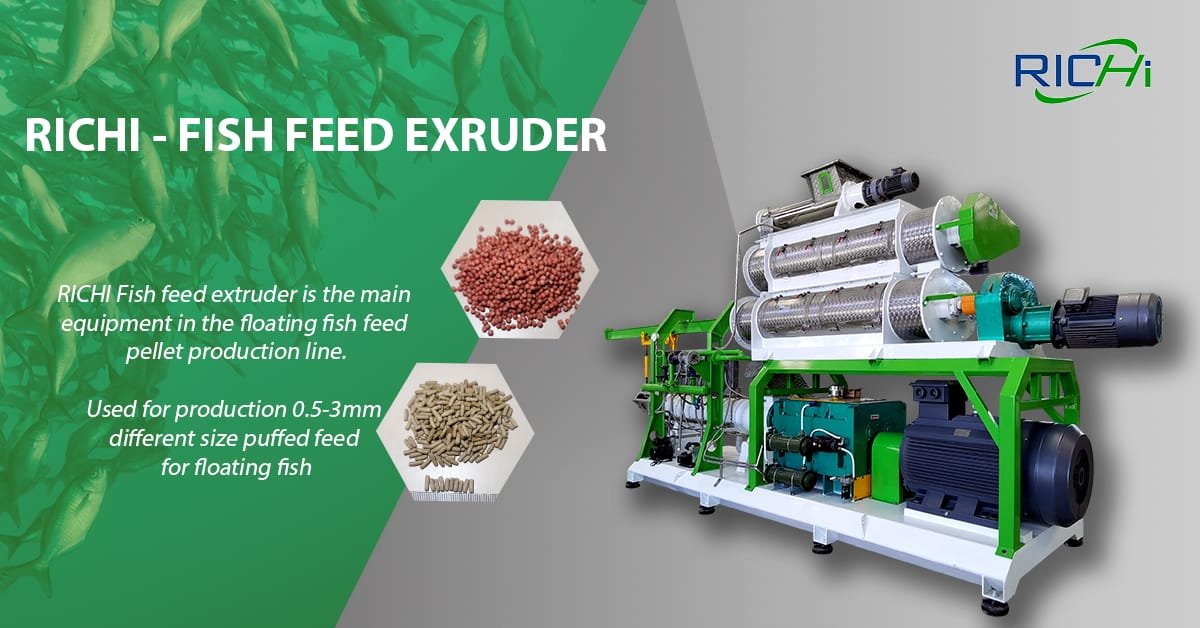In the rapidly expanding aquaculture sector, ensuring the availability of high-quality, nutritionally balanced fish feed is essential for sustainable growth. Fish feed pelleting machines have emerged as indispensable equipment, facilitating efficient and tailored feed production. Here’s an exploration into their significance, pricing factors, and strategies for maximizing investment value:
Significance of Fish Feed Pelleting Machines
Fish feed pelleting machines are pivotal in:
- Consistent Product Quality: Utilizing advanced technologies to ensure precise nutrient profiles in feed pellets, enhancing fish health, growth, and productivity.
- Efficient Production: With capacities ranging from 1 to 2 tons per hour, these machines enable cost-effective feed production suited for small to medium-scale aquaculture operations.
- Customized Formulations: Tailoring feed formulations to meet specific nutritional requirements of various fish species, life stages, and farming methods, optimizing overall productivity.
- Sustainability: Incorporating eco-friendly practices such as using alternative protein sources, minimizing waste, and employing energy-efficient technologies.
- Economic Benefits: Investing in these machines stimulates local economies, generates employment opportunities, and fosters growth within the aquaculture industry.
Understanding the Price of 1-2 T/H Fish Feed Pelleting Machines
Several factors influence fish feed pelleting machine price:
- Machine Capacity: Higher capacities command higher prices due to increased size, complexity, and power requirements.
- Machine Configuration: Components such as grinders, mixers, pellet mills, coolers, and automation systems impact overall costs.
- Brand and Manufacturer: Established brands often warrant higher prices due to their reputation, reliability, and quality assurance.
- Automation and Control Systems: Advanced systems enhance efficiency and control but come at a premium.
- Additional Features and Customizations: Specialized features like material handling systems, dust collection, and safety enhancements add to costs.
- Geographic Location: Manufacturing location affects pricing due to logistics, import duties, and taxes.
Based on current data:
- Prices for 1-2 T/H fish feed pelleting machines typically range from $20,000 to $100,000 USD or more, contingent on capacity, configuration, and features.
- For instance, a 1 T/H machine might cost between $20,000 to $50,000 USD, while a 2 T/H machine could range from $50,000 to $100,000 USD or higher, depending on specifications.
Related post: animal feed pellet mill for sale
Maximizing the Value of a 1-2 T/H Fish Feed Pelleting Machine Investment
To optimize return on investment:
- Market Research: Assess demand trends and raw material availability to validate investment feasibility.
- Energy Efficiency and Sustainability: Prioritize machines with energy-saving technologies and sustainable features for long-term operational cost reductions.
- Financing Options: Explore leasing or loan options to manage upfront costs and improve cash flow management.
- Supply Chain Reliability: Establish robust supply chains for raw materials and product distribution to ensure consistent production and sales.
- Skilled Workforce: Invest in training to empower operators and maintenance staff, optimizing machine performance and minimizing downtime.
- Continuous Improvement: Foster a culture of innovation to refine processes, explore technology upgrades, and enhance product offerings.
- Diversification: Explore alternate uses for fish feed pellets or expand into related markets to broaden revenue streams.
By leveraging these strategies, aquaculture producers, feed manufacturers, and investors can make informed decisions when investing in 1-2 T/H fish feed pelleting machines. This approach not only maximizes investment value but also contributes to the sustainable growth of the aquaculture industry, meeting the increasing global demand for high-quality fish products.
